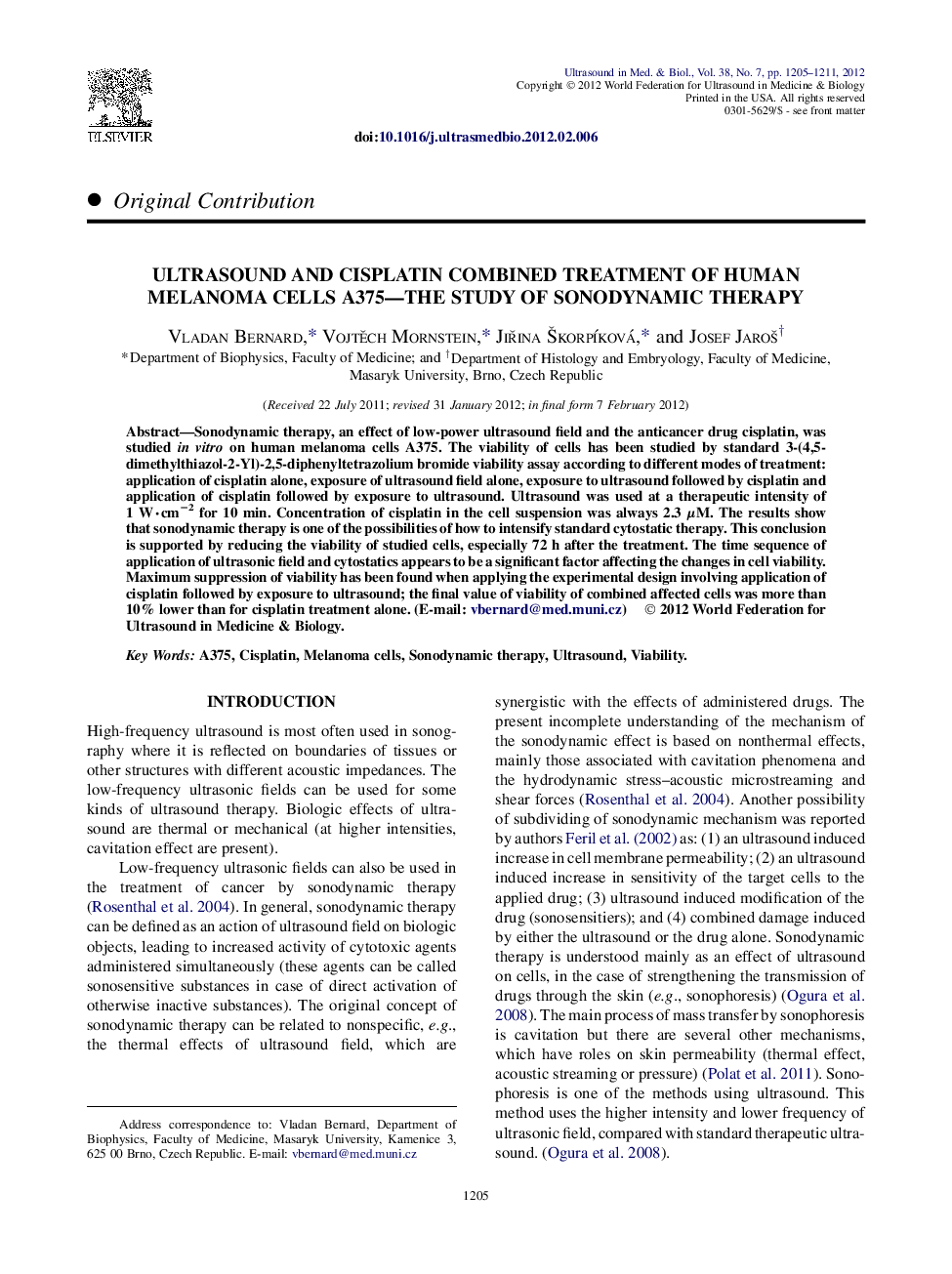| Article ID | Journal | Published Year | Pages | File Type |
|---|---|---|---|---|
| 10692149 | Ultrasound in Medicine & Biology | 2012 | 7 Pages |
Abstract
Sonodynamic therapy, an effect of low-power ultrasound field and the anticancer drug cisplatin, was studied in vitro on human melanoma cells A375. The viability of cells has been studied by standard 3-(4,5-dimethylthiazol-2-Yl)-2,5-diphenyltetrazolium bromide viability assay according to different modes of treatment: application of cisplatin alone, exposure of ultrasound field alone, exposure to ultrasound followed by cisplatin and application of cisplatin followed by exposure to ultrasound. Ultrasound was used at a therapeutic intensity of 1 Wâcmâ2 for 10 min. Concentration of cisplatin in the cell suspension was always 2.3 μM. The results show that sonodynamic therapy is one of the possibilities of how to intensify standard cytostatic therapy. This conclusion is supported by reducing the viability of studied cells, especially 72 h after the treatment. The time sequence of application of ultrasonic field and cytostatics appears to be a significant factor affecting the changes in cell viability. Maximum suppression of viability has been found when applying the experimental design involving application of cisplatin followed by exposure to ultrasound; the final value of viability of combined affected cells was more than 10% lower than for cisplatin treatment alone.
Related Topics
Physical Sciences and Engineering
Physics and Astronomy
Acoustics and Ultrasonics
Authors
Vladan Bernard, VojtÄch Mornstein, JiÅina Å korpÃková, Josef JaroÅ¡,
